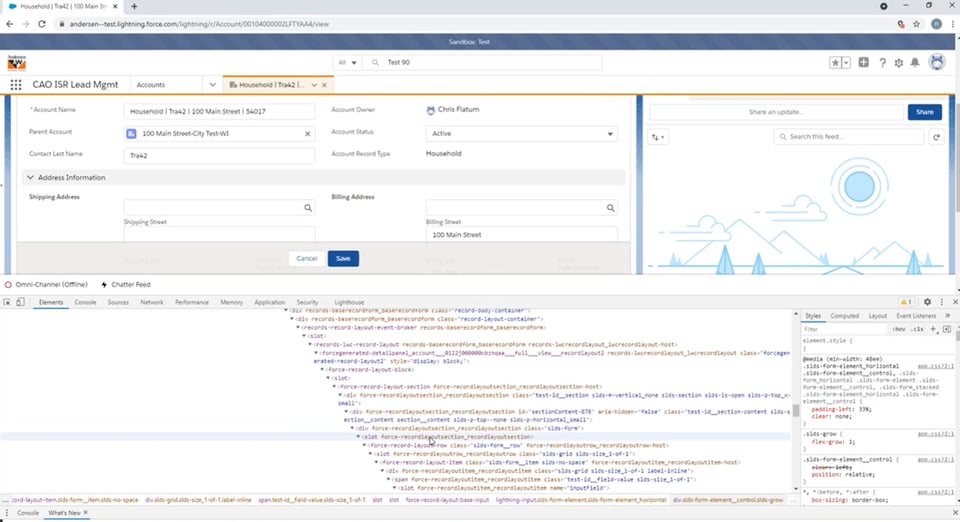How Salesforce QA Testing is Transforming (2022 and Beyond)
With thousands of possible integrations and customizations, now more than ever, enterprises are pressured to put a scalable and maintainable QA process in place.
Salesforce is a popular CRM system that helps sales, commerce, marketing, service and IT teams connect with their customer base and gather information about it. This means, however, that many organizations rely on Salesforce to perform business-critical tasks.
If a core system like Salesforce stops working, sales and customer success will grind to a halt, and customers will churn, putting the entire company at risk.
In order to ensure that all those business-critical processes that run through Salesforce are working accordingly, software testing is placed at the forefront of quality assurance. But as your organization grows and your business evolves, so do your business requirements.
The past two years have had a tremendous impact on the way people interact with businesses. This increased digitalization had put immense pressure on both development and QA teams.
Working against the clock, QA teams struggle to deliver customizations on time as testing requirements pile up on their desks.
Why is Salesforce QA a challenge?
Salesforce is a heavily customizable application, and rest assured, there are no two companies in the world using Salesforce in the exact same way.
Salesforce has its own programming language (APEX) and own database system, meaning that enterprises can build totally customized applications, with unique screens and features, on top of this technological foundation.
The problem is, testing Salesforce, especially when heavily customized, is a lengthy process and it drains departments of valuable resources. Without an army of testers at hand, enterprises often rely on developers and specialists in business functions to click and type through a long list of test cases.
This approach takes time away from business-critical, sometimes customer-facing, functions. And even then, testing this way only covers a fraction of all the scenarios you would want to cover to ensure in-depth quality assurance of your Salesforce platform.
However, this initial customization of the Salesforce application doesn’t end there.
As mentioned earlier, businesses are continuously evolving, and today’s rapid digitalization is keeping enterprises worldwide on their toes. This means that an organization’s Salesforce platform is constantly changing through new and adapted customizations, adding more and more workload to QA teams.
On top of that, Salesforce regularly updates its platform to enhance user experience and/or to fix underlying issues. Each release can include significant improvements to the cloud-based interface. Unfortunately, these changes can impact user customizations and even standard uses of the platform. For QA teams, this means a lot of maintenance.
Related Reading: How to Deliver Your Salesforce Spring Release on Time
What has Salesforce testing been like so far?
In order to test Salesforce, you have to verify the same business processes over and over again. Considering the intricate, endless customizations that occur in Salesforce, the testing process can only grow in complexity, which means that the number of test cases - and their frequency - reaches an infeasible point.
Related reading: Salesforce Regression Testing: 8 Best PracticesDue to the significant volume of test cases, most organizations in a similar situation would naturally resort to automated testing. However, unlike other CRM/ERP systems, Salesforce doesn’t have automation IDs or automation labels to ease the automation task.
So thousands of organizations are forced to continue testing manually.
Manual testing then becomes an ever-increasing bottleneck potentially causing slow time to market response, low productivity and resource scarcity, and risk on business continuity.
Therefore, many companies turn to a manual, “risk-based approach” to testing in which testers focus on the most important features - and ignore the rest. At a time when companies should be moving towards constant, 24/7 testing, this fragmented, manual approach leaves considerable gaps in test coverage and quality.
Download the guide: Get Started with Salesforce Automation
Why is Salesforce testing hard to automate?
Here are the reasons why Salesforce is difficult to automate from a technical perspective:
- Shadow DOMs: Salesforce uses Shadow DOMs to isolate components. This makes it difficult to identify elements in UI test automation.
- Heavy DOM structure: Salesforce’s DOM structure is heavy with a complex tree structure. This means that automation tools will need more time to access them.

Salesforce’s heavy DOM structure
- Element identifiers are hidden: Usually, a UI automation tool will need element details to identify visual elements in the application. Salesforce hides these for development purposes, making test automation difficult.
- Dynamic elements: UI elements that change with every test script run can be a real burden. Without an element locator strategy, maintenance of Salesforce tests will become a major time sink with every test run.
- Iframes: In Salesforce, a new tab is a new frame. These frames are difficult to identify because the UI automation tool needs to identify the elements under the frame. This can be difficult to automate with a script-based tool like Selenium and you’ll need to add that script logic in yourself, a task only for experienced Selenium testers.
Related reading: Can You Automate Salesforce Tests Using Selenium?
What will organizations do in 2022 and beyond?
Automation is now a fundamental requirement for all enterprises when working with business-critical systems like Salesforce. But according to the World Quality Report 2021-22, 85% of all testing is still done manually – the same number as ten years ago.
This is specifically relevant to Salesforce, where the technicalities around its platform don’t allow much bandwidth for test automation. Most enterprise automation tools available on the market have not evolved to meet Salesforce’s challenges. Moreover, they are far too complex for business users and typically require professional-grade coding skills to use.
Leapwork, however, makes Salesforce testing with automation possible. It solves these challenges by providing a reliable and fast way of working with dynamic elements in Salesforce, and a visual, no-code approach, which bridges the gap between business and IT teams.
Leapwork’s intelligent field recognition makes it incredibly easy and robust to work with Salesforce and other applications in an organization's IT ecosystem. For example, with Leapwork, it is straightforward to read data from another application, such as SAP or green screen terminal, and then validate against a Salesforce page in a web browser.
From a technical perspective, this is made possible because Leapwork has object locator algorithms that have been specifically trained to match the dynamic nature of Salesforce.
Watch this short demo to see an example of Salesforce automation with Leapwork:
Join our webinar on no-code automation and learn more about Leapwork’s unique automation platform:

